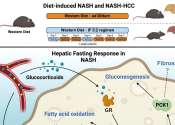Lab-grown muscles reveal mysteries of rare muscle diseases
Biomedical engineers at Duke University have developed a new technique to better understand and test treatments for a group of extremely rare muscle disorders called dysferlinopathy or limb girdle muscular dystrophies 2B ...
Jun 21, 2024
0
56









